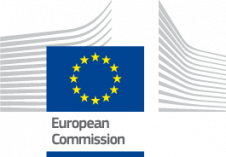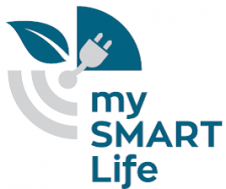The mySMARTLife project period was 12/2016 - 09/2022. The project aimed at the development of an Urban Transformation Strategy to support cities in the definition of transition models and progressing to the smart people and smart economy concepts.
Project objectives
Overall objectives of project mySMARTLife were:
- Transforming cities into more sustainable and environmentally friendly places.
- Reducing CO2 emissions, increasing the use of RES.
- Involving citizens in planning the urban transformation.
- Increasing the digitalization of cities by Urban Platforms.
- Implement 150+ smart actions in Nantes, Hamburg and Helsinki.
- Passing on experiences to Bydgoszcz, Rijeka and Palencia and to mySMARTLife Cities Network.
Read more about the project on Fundacion CARTIF project website.
Expected results
Project mySMARTLife expected to reach the following results:
- 6 Urban transformation strategies in Nantes, Hamburg, Helsinki, Palencia, Rijeka and Bydgoszcz.
- 369,509 m2 retrofitted, 66,441 m2 of new construction in Nantes, Hamburg and Helsinki.
- 55% of energy efficiency improvement and 54% of RES energy.
- 2,095 kWh of electricity storage.
- 49 ktons of CO2 emission savings.
- 30 EV, 84 charging stations, approx. 300 e-Buses and two autonomous e-buses.
Metropolia piloted two robot bus routes
With previous experience on real-life demos of the autonomous electric buses in Finland, the mySMARTLife project addressed local urban mobility issues with electric autonomous bus pilot lines. Metropolia University of Applies Sciences’ main role in the project was the definition, deployment and monitoring pilot operations in Helsinki demonstration area. Two automated bus pilots were carried out, in 2018 in Kivikko and in 2019 in Kalasatama. Both pilots lasted about six months.
- Total number of passengers 5185
- Driven 4006 kilometres
- Operator was on board to overtake the vehicle and drive manually when necessary
The majority of passengers came to try the bus, not the robot bus route being part of their regular journey. In general, passengers were satisfied with the ride. The main criticisms were the speed of the bus and the hard braking.
- The maximum speed of the bus was 18 km/h, which meant that it could not keep with the flow of traffic. Depending on the area of operation, the risks increased when other vehicles overtook the bus.
- Kalasatama was a more suitable operating area for the existing bus at this stage. The speed limit in the area is 30 km/h. This was the maximum recommended speed for testing similar automated buses in road traffic.
During the pilots in Helsinki, there were many situations where the operator had to intervene and overtake the bus. Typically these were narrow streets, human-driven traffic, and street-side parking.
Robotic buses need parking space, charging infrastructure and a maintenance depot. At this stage also the field staff involved in the operation. Problems will arise, if the "last mile" routes for the robotic buses are located far from existing maintenance services.
Routes had to be chosen on the basis of what the buses could do, rather than where there was demand. Currently the automated buses would best serve people with disabilities, for whom even short short walking distances are challenging. This group of users should be given special consideration in the development of vehicles and designing the corresponding services. However, the operator is not intended to assist the passengers physically.
Are automated buses sustainable?
As a conclusion, an electric vehicle is not automatically sustainable but it depends on the conditions in which the vehicle is operated and how the electricity it uses is generated. Additionally, the sustainability is related to how the vehicle is manufactured.
In order to achieve sustainable results, the robotic buses should reduce the use of private cars by making public transport more attractive, and more accessible. This can be achieved by increasing by complementing existing bus routes or sometimes, replacing them. However, if robotic buses replace only walking and cycling, CO2 emissions will not be reduced.
The potential future of automated electric shuttles
The potential uses and benefits of robotic buses in the near future can be briefly listed as follows:
- On-demand automated robotic buses would complement public transport and provide a service that specifically meets the demand.
- In areas of high demand, robotic buses could offer so-called "last mile" trips, and complement feeder services.
- On-demand services could be much more cost-effectively implemented in a driverless mode where one person would simultaneously control the operation of a fleet of several vehicles.
- Future projects should focus in particular on the development of the technology itself, so that the person responsible can be vehicle and allow one person to remotely monitor several vehicles.
Overall, these automated bus pilots received a lot of positive attention both from nationally and internationally. Despite the current challenges, the automated future looks bright. If smartly organised, they will improve the coverage and service of the public transport network. This would make a significant contribution to the future of the bus industry as a more sustainable transport system.
Partners
In Helsinki, the partners were
- City of Helsinki (hel.fi)
- Forum Virium Helsinki (forumvirium.fi)
- VTT Technical Research Centre of Finland (vtt.fi)
- HELEN energy company (helen.fi)
- Metropolia University of Applied Sciences
Please find all the 27 European project consortium members list on mysmartlife.eu website
Funding
This project has received funding from the European Union’s Horizon 2020 research and innovation programme under agreement n°731297.
Contact
tki-info [at] metropolia.fi (tki-info[at]metropolia[dot]fi)

